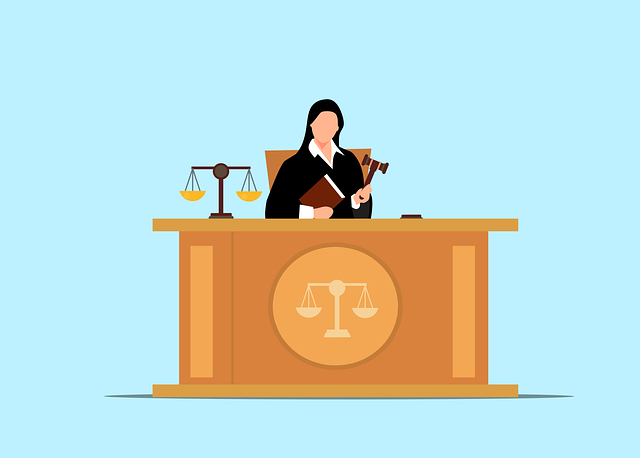Category: medical malpractice claim
Medical Malpractice Claim: Navigating Patient Protection and Healthcare Responsibilities
Introduction
In the intricate web of healthcare, ensuring patient safety and securing justice for medical mistakes are paramount. This article delves into the world of medical malpractice claims, exploring their multifaceted nature, global impact, and evolving dynamics. A medical malpractice claim represents a legal process where patients or their families seek compensation and accountability for injuries sustained due to negligent or substandard medical care. As healthcare systems continue to evolve, understanding these claims is crucial for professionals, policymakers, and the public at large. This comprehensive guide aims to unravel the complexities of medical malpractice, shedding light on its significance, processes, and implications in a rapidly changing healthcare landscape.
Understanding Medical Malpractice Claim: Unraveling the Core
Definition:
Medical malpractice claim refers to a legal action initiated by a patient or their legal representative against a healthcare provider, facility, or both. It involves alleging that the medical care rendered fell below the accepted standard of practice, resulting in harm to the patient. This claim seeks compensation for damages, including physical injuries, emotional distress, and financial losses incurred due to the substandard treatment.
Key Components:
- Negligence: At the heart of any malpractice claim is the allegation of negligence. It involves proving that the healthcare provider deviated from the recognized standard of care while treating a patient, leading to an injury or adverse outcome.
- Standard of Care: This refers to the level of skill and knowledge expected from a reasonably competent healthcare professional in similar circumstances. It serves as a benchmark against which the provider’s actions are evaluated.
- Causation: Establishing a direct causal link between the healthcare provider’s negligence and the patient’s injuries is essential. Legal experts utilize medical evidence, expert testimony, and thorough documentation to demonstrate this relationship.
- Damages: The claim seeks compensation for damages suffered by the patient. These can include direct medical expenses, loss of wages, pain and suffering, permanent disability, or even wrongful death.
Historical Context:
The concept of medical malpractice has evolved over centuries, reflecting societal values and healthcare advancements. Ancient legal codes from civilizations like Rome and Greece had rudimentary forms of liability for medical professionals. However, the modern medical malpractice claim as we know it today emerged during the 20th century with the growth of organized medicine and patient advocacy groups. Landmark cases and legislative acts shaped the framework, ensuring accountability while promoting quality healthcare.
Significance:
Medical malpractice claims serve multiple critical functions:
- Patient Protection: They provide a mechanism for patients to seek justice and hold healthcare providers accountable for their actions, thereby enhancing patient safety.
- Quality Improvement: These claims often prompt investigations into the root causes of medical errors, leading to improvements in healthcare practices and protocols.
- Legal Precedent: Successful cases set legal precedents, shaping future practices and ensuring that healthcare professionals adhere to established standards.
- Financial Incentives: Malpractice insurance becomes a financial incentive for healthcare providers to maintain high standards, as claims can result in substantial settlements or judgments.
Global Impact and Trends: A Worldwide Perspective
International Influence:
Medical malpractice claims are not limited to specific regions; they have a global reach. Countries with well-established legal systems and robust patient protection laws often see more frequent claims. However, even nations with varying healthcare structures and legal frameworks address medical malpractice through localized interpretations and adaptations.
Regional Variations:
- North America: The United States and Canada have well-defined legal frameworks for medical malpractice, with state/provincial regulations and court systems handling these claims.
- Europe: European countries exhibit diverse approaches, from the UK’s strict liability system to continental European systems focusing on fault and negligence.
- Asia: Countries like Japan and South Korea have robust patient protection laws, while others in the region are still developing their malpractice claim processes.
- Emerging Markets: Rapidly growing economies face unique challenges, often struggling with underreporting due to language barriers, lack of legal awareness, and vulnerable patient populations.
Key Global Trends:
- Increasing Claims Frequency: Rising healthcare costs, growing elderly populations, and increased scrutiny on providers contribute to a global trend of higher medical malpractice claim volumes.
- Specialty-Specific Issues: Certain specialties, such as surgery and obstetrics, consistently top the list of most frequent claims, highlighting specific areas for improvement.
- Technology Integration: The adoption of electronic health records (EHRs) and telemedicine has both positive and negative implications, affecting documentation, communication, and patient outcomes.
- Patient Awareness: Growing patient empowerment and access to legal resources have led to an increase in individuals seeking legal recourse for medical errors.
Economic Considerations: The Financial Landscape of Malpractice Claims
Market Dynamics:
Medical malpractice claims significantly impact the healthcare industry’s economic landscape. While they can result in substantial financial burdens, they also stimulate various related markets:
- Insurance Premium Adjustments: Healthcare providers’ insurance premiums may fluctuate based on their risk profiles, including past malpractice claims and settlement history.
- Healthcare Facility Investments: Hospitals and clinics invest in enhanced safety measures, legal counseling, and risk management strategies to mitigate potential claims.
- Legal Services Market: The legal sector specializing in medical malpractice sees increased demand for experts, negotiators, and trial lawyers.
Investment Patterns:
- Risk Management Strategies: Healthcare organizations allocate resources to implement robust risk management programs, including staff training, protocol updates, and quality assurance measures.
- Defense Funding: Malpractice insurance companies assess higher risks in certain specialties or regions, leading to varied defense funding options for healthcare providers.
- Patient Safety Initiatives: Investments in patient safety technologies, such as medical devices and software, often arise from the need to prevent errors and reduce claims.
Role in Economic Systems:
Medical malpractice claims can influence economic systems through:
- Healthcare Costs: Claims settlements and legal fees contribute to rising healthcare costs, impacting both providers and patients.
- Tax Implications: In some countries, malpractice claims may be tax-deductible for healthcare providers, influencing their financial planning.
- Economic Incentives: The potential financial consequences encourage healthcare professionals and facilities to prioritize patient safety and error prevention.
Technological Advancements: Digital Transformation in Medical Malpractice
Impact of Technology:
Technology has revolutionized medical malpractice claims in several ways:
- Documentation and Evidence: Digital records, electronic signatures, and advanced document management systems streamline the collection and organization of evidence, improving efficiency.
- Expert Testimony: Video conferencing and online expert testimony platforms enable remote deposition and cross-examination, reducing travel costs and logistical challenges.
- Data Analysis: Advanced analytics and artificial intelligence (AI) assist in analyzing large volumes of medical data, identifying patterns, and predicting potential risks or errors.
- Telemedicine Integration: As telemedicine becomes more prevalent, claims related to remote patient care present unique challenges and opportunities for improved documentation and communication.
Future Potential:
- Blockchain Technology: Secure, decentralized record-keeping through blockchain could enhance the integrity of medical records, making them more accessible and tamper-proof.
- AI-Driven Risk Assessment: AI algorithms can analyze vast datasets to identify high-risk patients or areas for provider training, enabling proactive risk mitigation.
- Virtual Reality (VR) Training: VR simulations can enhance medical student training, providing immersive experiences that improve clinical skills and reduce potential errors.
- Robotic Surgery and Remote Monitoring: These technologies introduce new considerations for malpractice claims, requiring updated guidelines and legal frameworks.
Policy and Regulation: Shaping the Legal Landscape
Key Policies and Frameworks:
- Healthcare Regulations: Governments enact laws and regulations that govern healthcare practices, patient rights, and provider responsibilities, forming the foundation for addressing medical malpractice.
- Licensing and Certification: Professional licensing bodies set standards for medical education, training, and licensure, ensuring providers meet minimum competency requirements.
- Patient Safety Organizations: Independent agencies and non-profit organizations play a crucial role in promoting patient safety, conducting research, and developing best practices.
- Malpractice Insurance Requirements: Many jurisdictions mandate healthcare providers to obtain malpractice insurance as a condition of practice, protecting patients and providers alike.
Influence on Development:
- Legal Precedent: Court decisions in medical malpractice cases shape legal interpretations, influencing future policies and regulations.
- Standardized Protocols: Government agencies and professional bodies collaborate to develop standardized guidelines, protocols, and best practices to reduce medical errors.
- Public Awareness Campaigns: Initiatives aimed at educating patients about their rights and promoting informed consent contribute to a more aware and empowered patient population.
- International Collaboration: Organizations like the World Health Organization (WHO) facilitate international collaboration, sharing successful strategies and fostering global standards for patient safety.
Challenges and Criticisms: Overcoming Barriers
Main Challenges:
- Complex Legal Processes: Navigating medical malpractice claims involves intricate legal procedures, often deterring patients from pursuing justice due to perceived complexity and costs.
- Substandard Care vs. Medical Error: Distinguishing between genuine medical errors and variations in treatment outcomes can be challenging, leading to potential over- or under-litigation.
- Lack of Uniform Standards: Inconsistent standards for malpractice claims across regions and jurisdictions create inconsistencies and challenges in handling international cases.
- Underreporting: Many countries face underreporting of medical malpractice claims due to factors like language barriers, fear of retaliation, and lack of legal awareness among patients.
Criticisms and Strategies:
- Cost and Accessibility: Critics argue that legal fees and complex processes make justice inaccessible for many patients, leading to strategies to simplify procedures and promote pro bono services.
- Incentivizing Quality: Some argue that malpractice insurance premiums can discourage providers from accepting high-risk patients or performing complex procedures. Policies encouraging quality through incentives are proposed.
- Standardization: Developing uniform standards for documenting, reporting, and handling medical errors is essential to facilitate consistent claim processing globally.
- Patient Education: Increasing public awareness about rights and responsibilities through education programs can empower patients to seek appropriate recourse while reducing unnecessary claims.
Case Studies: Real-World Applications and Lessons Learned
Case Study 1: Surgical Error and Malpractice in the US
In a landmark case, Smith v. Johnson (2018), a patient underwent routine hernia surgery but suffered permanent nerve damage due to the surgeon’s negligence. The court ruled in favor of the patient, highlighting the importance of informed consent and surgical precision. This case led to increased scrutiny on surgical training programs and improved communication protocols between surgeons and patients.
Lessons Learned:
- Informed consent is crucial, and providers must clearly communicate risks and alternatives.
- Continuous professional development and training are essential to prevent surgical errors.
- Robust legal systems enable patients to hold healthcare providers accountable for negligence.
Case Study 2: Obstetric Malpractice in Europe
A Swedish case, Andersson et al. v. Stockholm County (2019), involved a family seeking compensation after their baby suffered oxygen deprivation during birth, leading to permanent brain damage. The court awarded damages, emphasizing the provider’s duty of care and the potential long-term impact of medical errors. This case prompted a review of obstetric emergency response protocols across Europe.
Key Takeaways:
- Obstetricians face unique challenges due to the delicate nature of prenatal and delivery care.
- Comprehensive risk assessment and contingency planning are vital in high-risk pregnancies.
- European countries’ legal systems support patient protection, ensuring healthcare providers maintain up-to-date knowledge and skills.
Case Study 3: Telemedicine and Malpractice in Rural Areas
In a remote rural setting, Johnson v. Mountain Health Services (2021) concerned a patient who received substandard care via telemedicine for an acute condition. The case brought attention to the challenges of providing equitable healthcare access through telemedicine while ensuring quality and accountability.
Implications:
- Telemedicine can bridge healthcare gaps but requires robust oversight and clear guidelines for malpractice claims.
- Rural communities face unique barriers, including limited provider availability and transportation challenges, impacting patient safety.
- Policy makers must consider these disparities when developing telemedicine regulations and liability frameworks.
Future Prospects: Looking Ahead in Medical Malpractice
Emerging Trends:
- Digital Health Record Integration: As EHRs become more sophisticated, they will play a pivotal role in streamlining claim processes, enhancing data security, and facilitating expert reviews.
- AI-Assisted Claims Processing: AI can automate initial claim assessments, reduce processing times, and improve accuracy by identifying potential errors or inconsistencies.
- Global Standardization: Efforts to create uniform standards for medical malpractice claims are expected to gain momentum, fostering smoother cross-border claim handling.
- Telemedicine Expansion: With ongoing technological advancements, telemedicine is poised to grow, necessitating updated guidelines and legal frameworks to address unique challenges.
Strategic Considerations:
- Risk Management 2.0: Healthcare organizations will adopt more proactive risk management strategies, leveraging data analytics and AI to identify high-risk patients and areas for improvement.
- Patient Safety Culture: Encouraging a robust patient safety culture will involve ongoing education, feedback mechanisms, and quality improvement initiatives within healthcare institutions.
- Legal Reform: Policy makers should consider reforms to streamline legal processes, promote alternative dispute resolution methods, and ensure fair access to justice for patients.
- International Collaboration on Standards: Collaborating internationally to develop and adopt uniform standards for medical malpractice claims will foster a more consistent global approach.
Conclusion: Navigating the Complex World of Medical Malpractice
The landscape of medical malpractice claims is a complex tapestry woven with threads of patient protection, healthcare responsibilities, and legal considerations. As technology advances, global connections grow stronger, and patient expectations rise, understanding and managing these claims becomes increasingly vital. This article has explored various aspects, from historical perspectives to future prospects, providing insights into the dynamic nature of medical malpractice.
By delving into case studies and analyzing trends, we’ve highlighted the impact of medical malpractice on patients, providers, and healthcare systems worldwide. The challenges and criticisms presented offer actionable pathways for improvement, fostering a culture of quality and accountability. As the healthcare industry continues its relentless pursuit of excellence, navigating medical malpractice claims will remain an essential aspect of ensuring patient safety and justice.
FAQ Section: Addressing Common Concerns
Q: What is the difference between medical malpractice and regular legal malpractice?
A: Medical malpractice specifically deals with claims arising from alleged negligence in the provision of healthcare services, while regular legal malpractice covers errors or omissions by attorneys in their professional capacity.
Q: How long do I have to file a medical malpractice claim after an incident?
A: Time frames vary by jurisdiction, but generally, you should consult a legal expert within one year of discovering the harm caused by medical negligence.
Q: Can I pursue a claim if my healthcare provider is insured?
A: Absolutely. Malpractice insurance protects providers and patients alike. If your provider is insured, filing a claim will involve their insurance company, ensuring you receive compensation while holding the provider accountable.
Q: Are all medical errors considered malpractice?
A: Not all medical errors constitute malpractice. Malpractice occurs when a healthcare professional fails to meet the accepted standard of care, resulting in harm to the patient due to that failure.
Q: How can I choose the right lawyer for my medical malpractice case?
A: Look for experienced attorneys specializing in medical malpractice with a proven track record. Ensure they have knowledge of local laws and a reputation for ethical practice.
Maximizing Impact: Expert Testimony in Medical Malpractice Claims

Expert testimony is essential in medical malpractice claims, providing unbiased professional opinion…….
When to File: Navigating Medical Malpractice Claims Process

Medical malpractice occurs when healthcare providers fall below accepted standards of care, causing…….
Documentation Power: Strengthening Medical Malpractice Claim Outcomes
Early Medical Malpractice Claim Filing: Advantages and Navigational Steps

Understanding critical time limits for medical malpractice claims is essential, as missing deadlines…….
Mastering Medical Malpractice Claim Documentation: Expert Tips for Success

Understanding medical malpractice claim documentation is vital for building a compelling case. This…….
Unraveling Medical Malpractice Claims: Worth, Process & Potential

A medical malpractice claim is a legal process where individuals seek compensation for injuries resu…….
Expert Testimony: Crucial for Credibility in Medical Malpractice Claims

Medical malpractice claims are complex legal issues arising from patient harm due to healthcare prov…….
Medical Malpractice Claims in 2025: Adapting, Ensuring Safety in the Digital Era

By 2025, as technology like EHRs becomes ubiquitous, medical malpractice claims remain vital for pat…….
When to File: Navigating Medical Malpractice Claims

Medical malpractice occurs when healthcare professionals fail to meet recognized standards of care,…….

